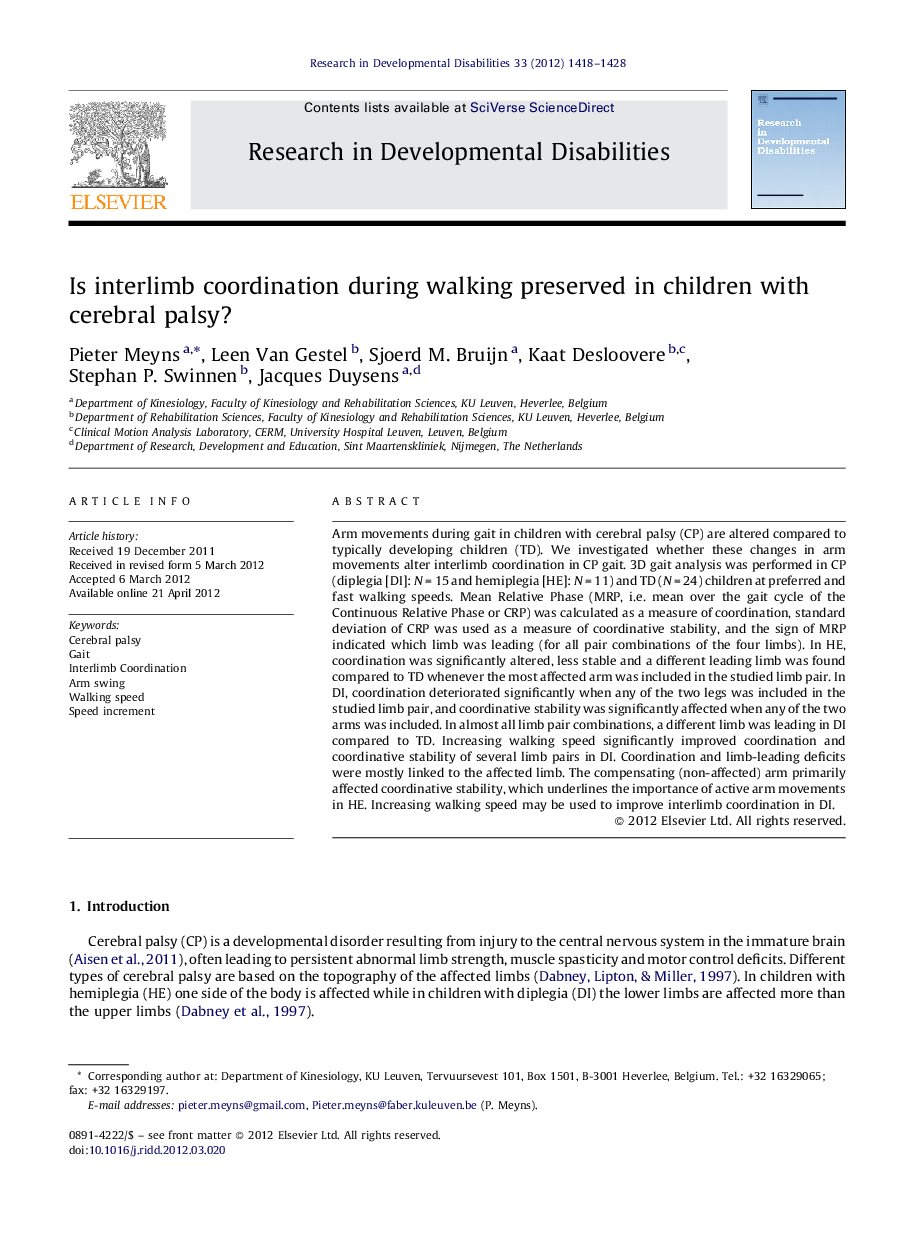| Article ID | Journal | Published Year | Pages | File Type |
|---|---|---|---|---|
| 371962 | Research in Developmental Disabilities | 2012 | 11 Pages |
Arm movements during gait in children with cerebral palsy (CP) are altered compared to typically developing children (TD). We investigated whether these changes in arm movements alter interlimb coordination in CP gait. 3D gait analysis was performed in CP (diplegia [DI]: N = 15 and hemiplegia [HE]: N = 11) and TD (N = 24) children at preferred and fast walking speeds. Mean Relative Phase (MRP, i.e. mean over the gait cycle of the Continuous Relative Phase or CRP) was calculated as a measure of coordination, standard deviation of CRP was used as a measure of coordinative stability, and the sign of MRP indicated which limb was leading (for all pair combinations of the four limbs). In HE, coordination was significantly altered, less stable and a different leading limb was found compared to TD whenever the most affected arm was included in the studied limb pair. In DI, coordination deteriorated significantly when any of the two legs was included in the studied limb pair, and coordinative stability was significantly affected when any of the two arms was included. In almost all limb pair combinations, a different limb was leading in DI compared to TD. Increasing walking speed significantly improved coordination and coordinative stability of several limb pairs in DI. Coordination and limb-leading deficits were mostly linked to the affected limb. The compensating (non-affected) arm primarily affected coordinative stability, which underlines the importance of active arm movements in HE. Increasing walking speed may be used to improve interlimb coordination in DI.
► We measured interlimb coordination in gait of children with diplegia and hemiplegia. ► In both groups coordination was altered compared to typically developing children. ► In hemiplegia coordination and limb-leading deficits were linked to the affected arm. ► Also, in diplegia coordinative stability was affected by the non-affected arm. ► The benefit of a higher walking speed to improve interlimb coordination is discussed.
